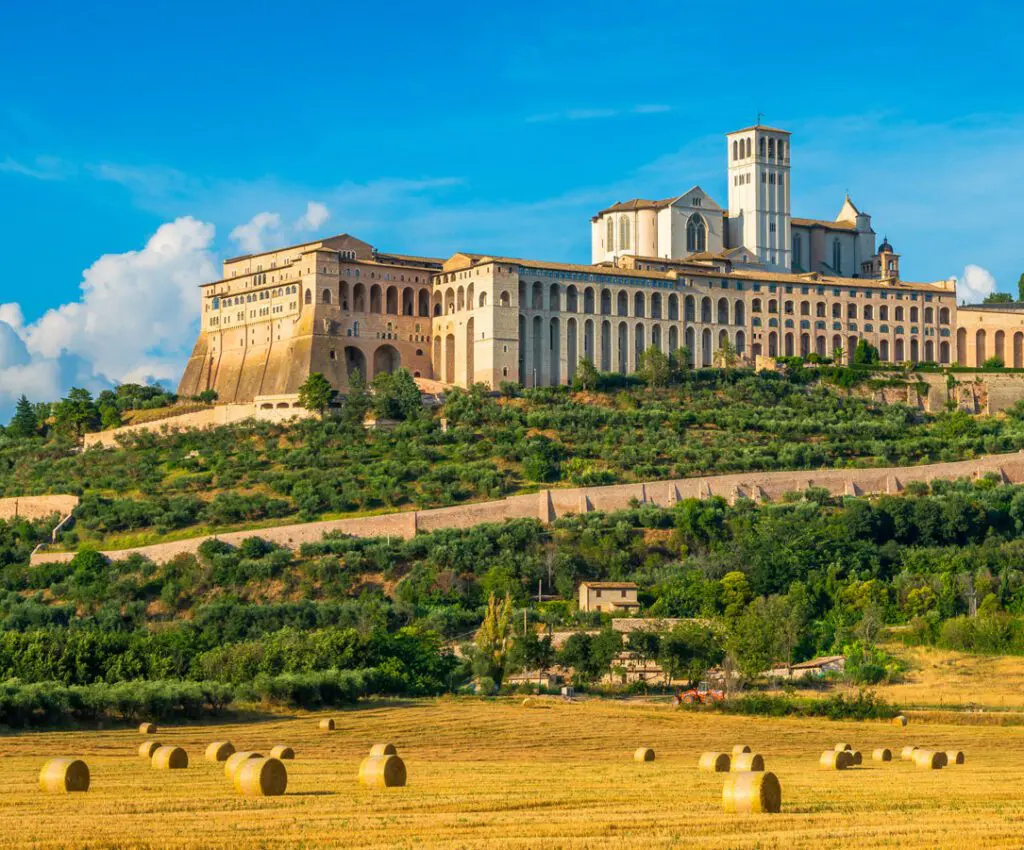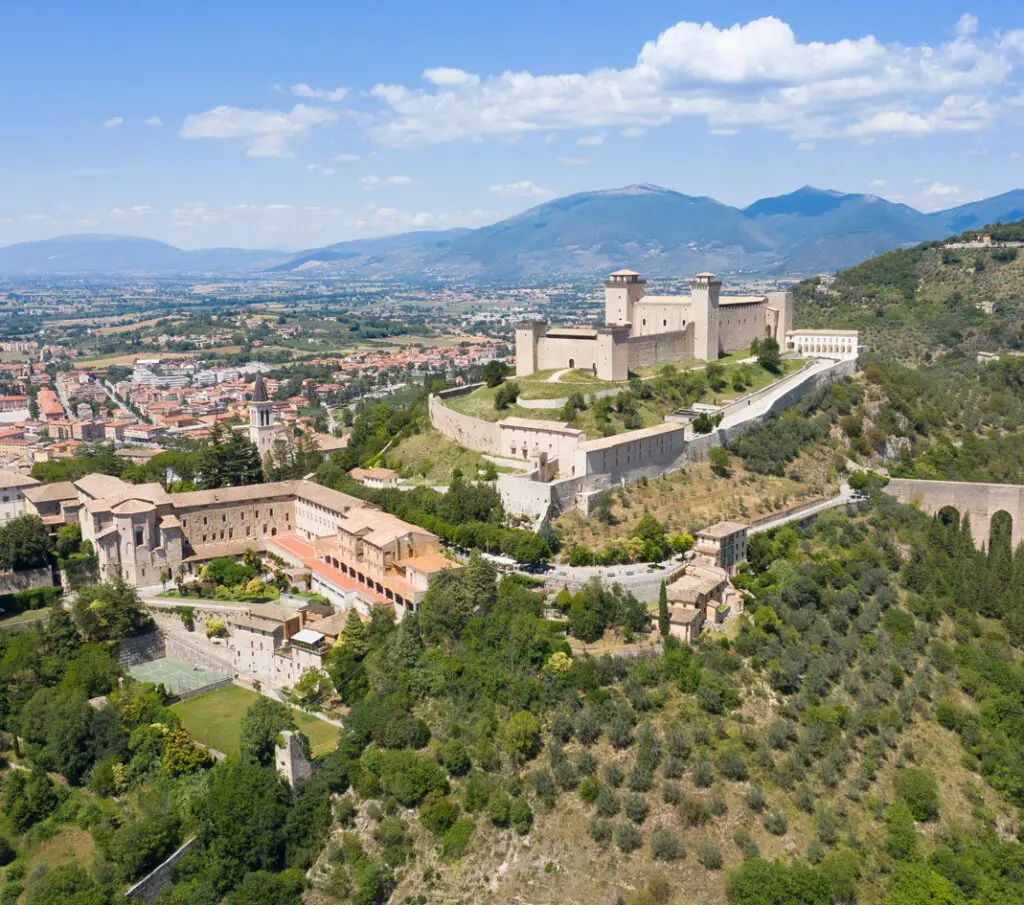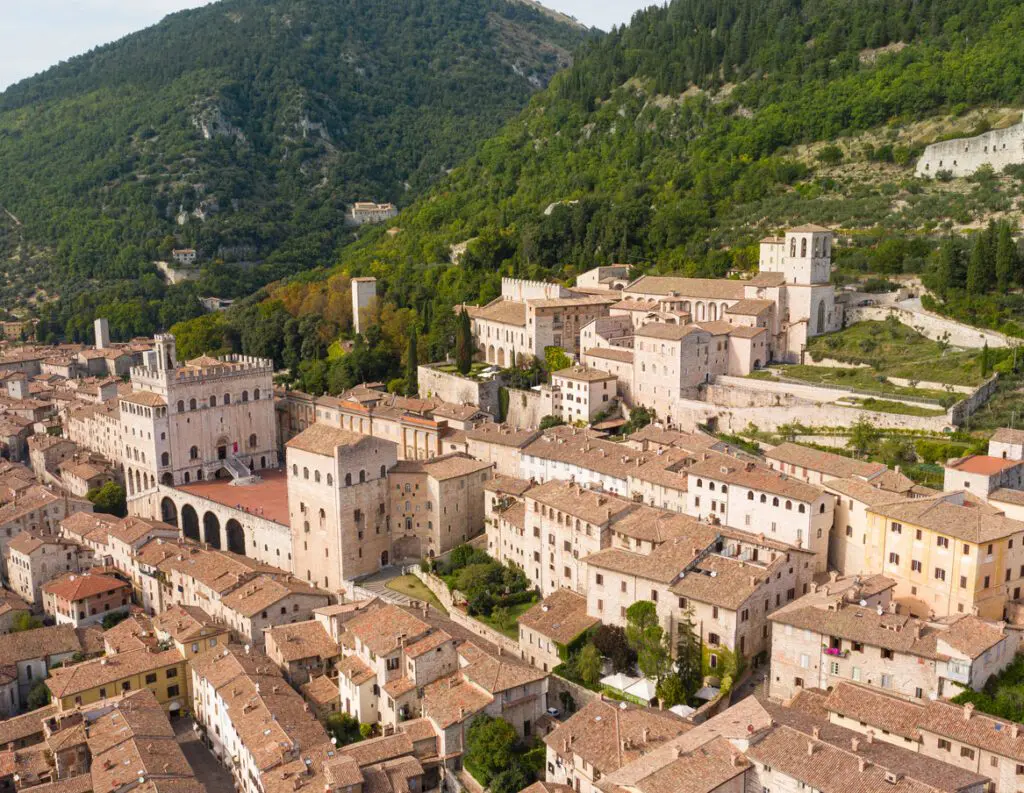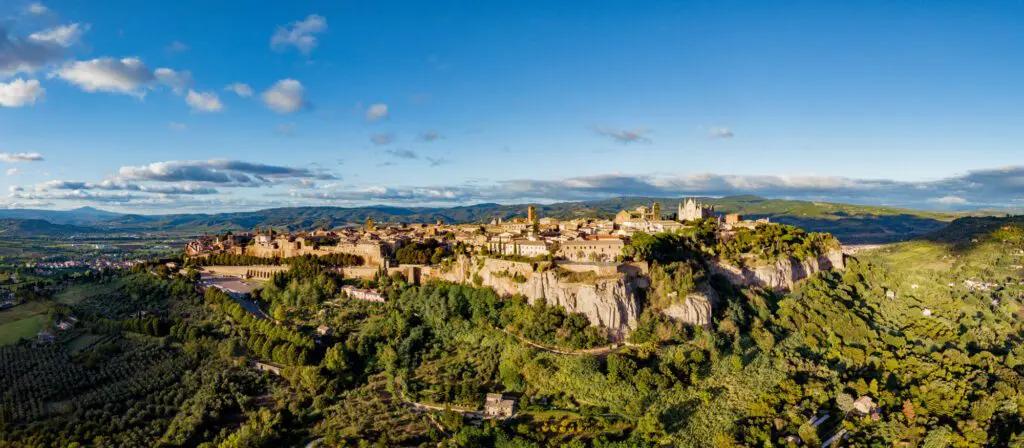Saint Peter's Abbey in “Borgo Bello”
The way that starts from the Church of Saint Ercolano, and that in past times led directly to Rome, ends in Borgo Bello, the “Beautiful Suburb,” an area that developed thanks to the Benedictine abbey dedicated to Saint Peter.
As soon as you pass one of the monumental town gates, designed by Agostino di Duccio (1418 - ca 1481), you will notice the geometrical shape of Saint Peter's belfry, with a sharp steeple that overlooks the low houses in the quarter. That belfry is one of Perugia's symbols, along with the Etruscan Arch and the Great Fountain.
The complex currently includes – beside Saint Peter's Church – the department of Agriculture of the Perugia University, and a Medieval-like botanical garden.
Some Historical Data
The origins of Saint Peter's Abbey must be searched for deep back in time. Some phases of its more than thousand-year-old history, indeed, are lost in the haze of the centuries. The place where the monastery would be built is recorded in old sources as Monte Capraro, “Upland of the Goats,” a rocky spur over the valley of Tiber River. Here probably a Christian cemetery existed. Saint Gregory the Great, in fact, recalls that in the sixth century in this area Saint Ercolano was buried – the bishop who had tried to organize the resistance of Perugia when it was besieged by the Goths led by Totila.
Even Perugia's first cathedral is supposed to have been here, in connection with the grave of the martyred bishop. In 965, Bishop Onesto, after ascertaining that the cathedral was completely forlorn, ceded the area to a Saint from Perugia San Pietro Vincioli, so as to let him start the building of a monastic community. That complex would keep increasing in time, up to acquiring a basic role in town development.
The Saint Peter Complex
The First Cloister
It is not easy, at first sight, to make out the overall architectural structure of Saint Peter's Abbey (and Basilica). To access its main gate you must cross the first cloister, built in 1614 on a project by Valentino Martelli. The gate is surmounted by a lunette with a painting ascribed to Gian Nicola di Paolo. Some remains of the former façade are also visible, as well as of Medieval wall paintings and, at the base of the belfry, the remains of a Roman building.
The Interior of the Church
The interior of the church has been divided into three naves by means of pillars that had been retrieved from a former building, as had been most capitals and bases. On the second pillar on the left the founder of the abbey, Saint Pietro Vincioli, is portrayed. One of his miracles is also shown: when some workers were letting the pillar down onto its base, the ropes broke, and only the Saint's intervention avoided victims. On closer inspection, in fact, the pillar is not perfectly centered on its base.
The current look of the basilica shows the signs of a late 16th century updating decided by the then abbot. This made the painting cycle more uniform, also thanks to the warm light reflected by the gilded frames of the paintings, and thanks to the wood ceiling in coffers, and the canopy over the high altar. The architect chosen was Valentino Martelli, who designed the new altar and had the monumental wood choir shifted – with the consequence that, according to Herbert von Karajan, the acoustics in the apse is now among the best worldwide.
The walls in the main nave are covered with huge canvases (called teleri) showing Stories from the Old Testament and the New Testament. Above the doorway, on the internal side, a big painting makes the Apotheosis of the Benedictine Order. So, to walk in the naves means to make a breathtaking tour in Mannerism and Baroque Art.
The Wood Choir
The wood choir was built in some ten years, starting from 1525, by the Zambelli artisans – a workshop from Bergamo, Northern Italy. It is one of the most important engraved and inlaid choirs all over Italy.
Its current position is not its original one in front of the high altar; it was shifted during the renovation of the church interior, later on in the 16th century.
The Second and Third Cloisters
After exiting the church, it may be worth following the corridor the leads to the second cloister, in whose middle a 16th century well can be seen. The architecture of this cloister was originally in three levels, the second of which was walled up in the 18th century. On one side, you can see a door and a double-arched window belonging to the 15th century Chapter Hall (“Chapter” meaning the monks' meeting here). Farther on, there is the entry to the old refectory, the dining hall. It is preceded by a wonderful hand-washing basin in many-colored glazed terracotta (1487-88), featuring a picture of the Samaritan Woman at the Well (from the Gospel of John, ch. 4).
Via another corridor you can reach the third cloister. Called Chiostro delle stelle, “the Cloister of the Stars,” it was designed in 1571 by a famous architect, Galeazzo Alessi .
INFORMAZIONI
Località
Orari
Contatti
info@secretumbria.it













